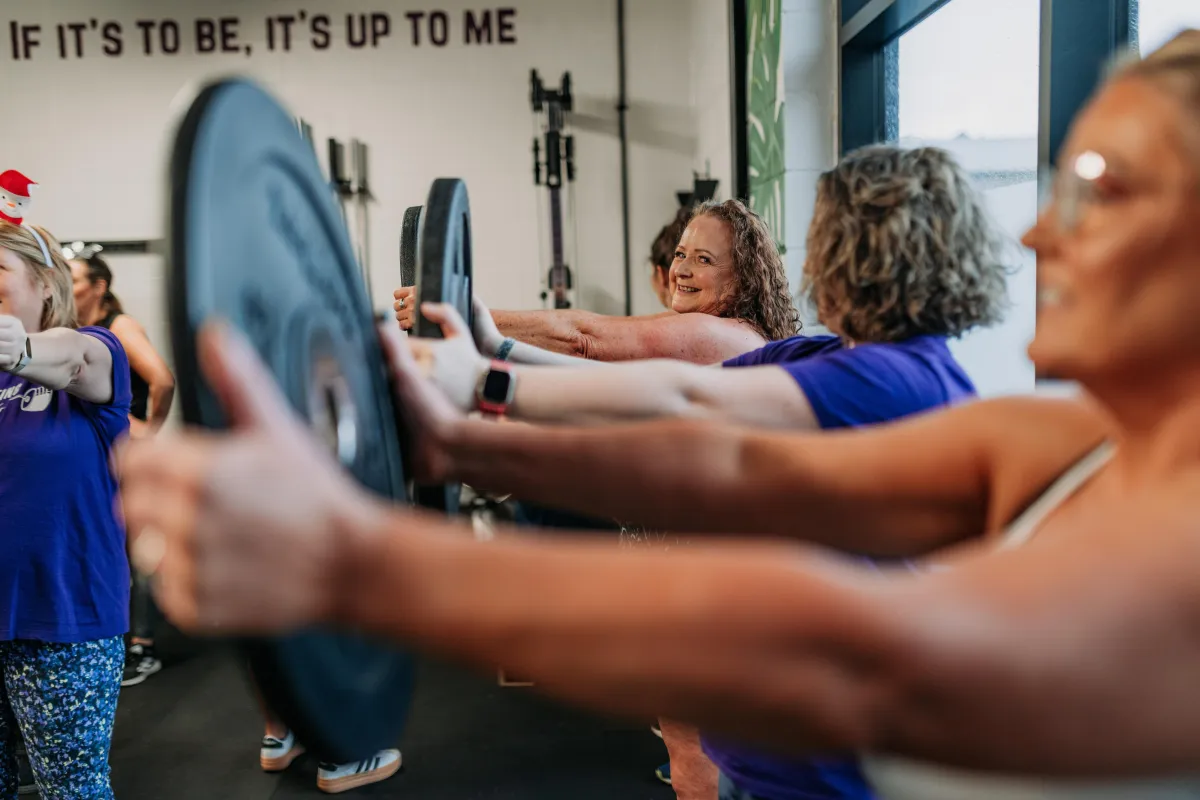
How to Calculate Your Calories
How to Calculate Your Calories (Without Obsessing Over Them)
One of the most common questions we hear at Forge Female Fitness is: “How many calories should I eat?”
For women across Ballymoney and the North Coast, this question is usually followed by frustration. You’ve tried eating less, you’ve tried following diets from Instagram, and yet nothing seems to stick. The truth? Most women either eat too little and stall progress, or eat without awareness and wonder why nothing changes.
At Forge Female Fitness, Northern Ireland’s No.1 Health and Wellness Studio for women, we keep it simple. You don’t need apps, spreadsheets, or diet books. Just a straightforward calculation that gives you clarity, without obsession.
Why Female Fat Loss Is Different
Before we get into numbers, it’s important to understand why women’s calorie needs are unique.
Hormones, metabolism, and life stages all play a role. Oestrogen and progesterone affect how efficiently your body uses energy, while cortisol (your stress hormone) can influence hunger and cravings. During perimenopause and menopause, metabolism can slow slightly and recovery takes longer.
That means women need a tailored approach, one that fuels the body, not starves it.
The Simple Calorie Formula
Here’s the method we use with our members at Forge Female Fitness Ballymoney:
To maintain your weight:
👉 Multiply your bodyweight (in lbs) × 12
To lose weight/fat:
👉 Multiply your bodyweight (in lbs) × 10
That’s it. No confusing calculators or extreme restrictions. Just a simple baseline number you can actually use.
Example 1: 160lb woman (around 72kg)
Maintenance: 160 × 12 = 1,920 calories per day
Fat loss: 160 × 10 = 1,600 calories per day
Example 2: 140lb woman (around 64kg)
Maintenance: 140 × 12 = 1,680 calories per day
Fat loss: 140 × 10 = 1,400 calories per day
This isn’t an exact science — but it’s a practical starting point that works in the real world.
Why This Works
The x12 and x10 method works because it creates a realistic range.
Most women go wrong by eating way below these numbers. They slash calories to 1,200 or less, which only slows metabolism, increases cravings, and makes fat loss harder. Others unknowingly eat above maintenance, thinking they’re in a deficit.
By using this formula, you get clarity. You know where your baseline is, and you can adjust based on how your body responds.
Balancing Your Calories
Calories matter, but quality matters too. The goal isn’t just to hit numbers — it’s to nourish your body.
Here’s how we advise our Forge members to balance their calories:
Protein — Aim for a palm-sized portion with every meal. Protein helps preserve muscle, keeps you fuller for longer, and supports recovery.
Carbs — Choose slow-release carbs like oats, rice, potatoes, and fruit. These give steady energy for training and daily life.
Fats — Include healthy fats like avocado, nuts, and olive oil. They support hormones, mood, and satiety.
Veggies — Pack your plate with colour. Fibre supports digestion and hormone health.
A Hand-Based Portion Guide
If calorie tracking feels stressful, here’s a visual method you can use instead:
Protein: Palm-sized portion per meal
Carbs: Cupped handful per meal
Fats: Thumb-sized portion per meal
Veggies: Two handfuls per meal
This approach keeps things flexible, practical, and easy to stick to — no scales or apps required.
Busting the Biggest Nutrition Myths
Myth 1: The lower your calories, the faster the fat loss.
In reality, extreme deficits cause burnout. Small, steady deficits are more effective.
Myth 2: Carbs stop you losing fat.
Carbs fuel your brain, muscles, and hormones. Without them, fatigue and cravings skyrocket.
Myth 3: Eating late at night makes you gain fat.
What matters is your total intake, not the time you eat.
Myth 4: You need to count calories forever.
Tracking is a tool for awareness, not a lifelong commitment. Once you understand your needs, you can eat intuitively.
Practical Tips for Busy Women
Pick your starting number. Use x12 for maintenance or x10 for fat loss.
Focus on protein. Most women under-eat protein — aim for 20–30g per meal.
Fuel your workouts. Eat carbs before training and protein after to recover well.
Stay consistent. Give any approach at least 3–4 weeks before making adjustments.
Track how you feel. Energy, sleep, and strength are better indicators than the scale.
How Women Across Ballymoney and the North Coast Are Learning to Fuel Properly
Women who join Forge Female Fitness often come from years of dieting, restriction, or confusion about calories. Within weeks, they feel the difference of fuelling their bodies properly — stronger workouts, better sleep, and improved mood.
Our coaches specialise in female nutrition in Northern Ireland, guiding women step by step through eating habits that support their goals. Whether it’s fat loss, strength, or just feeling good in your own skin, we provide clear strategies that fit into everyday life.
At our Ballymoney gym for women, we’ve seen first-hand that when women stop under-eating and start fuelling properly, their results skyrocket.
Key Takeaways
Use the x12 and x10 formula. Multiply your bodyweight in lbs for a simple calorie baseline.
Don’t under-eat. Starving slows your metabolism and stalls progress.
Balance your plate. Include protein, carbs, fats, and plenty of veg.
Keep it simple. Use hand-sized portions if tracking isn’t for you.
Measure energy, not just weight. How you feel and perform matters most.
Final Thoughts
Calories aren’t scary — they’re just energy. Understanding how much your body needs gives you the power to make better choices without stress or restriction.
At Forge Female Fitness Ballymoney, we don’t do diets. We teach women across the North Coast how to fuel for strength, confidence, and health, using simple strategies that work in real life.
If you’re ready to stop guessing and start eating with clarity, our team at Forge Female Fitness is here to guide you every step of the way.
Fed up of guessing how to transform your health?
Join our 30 Day Trial >
